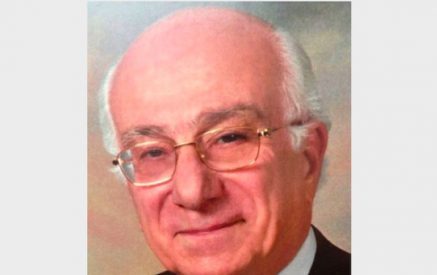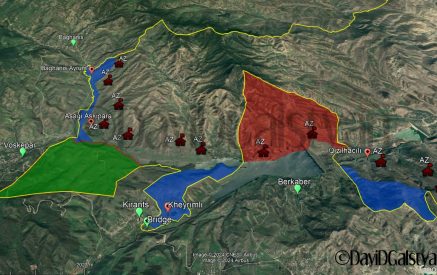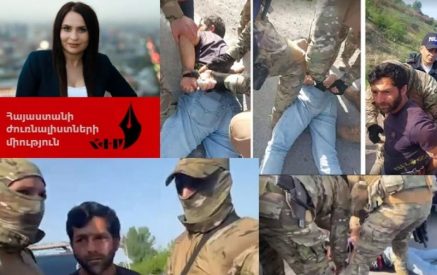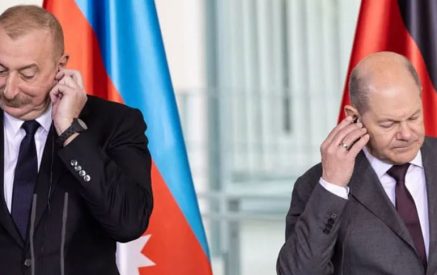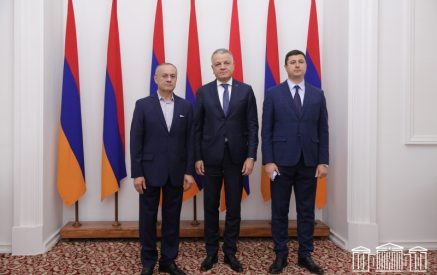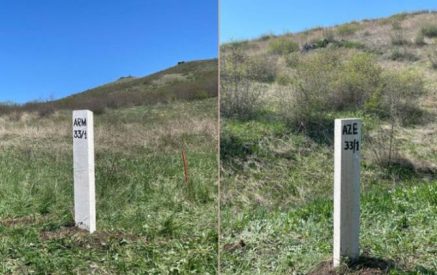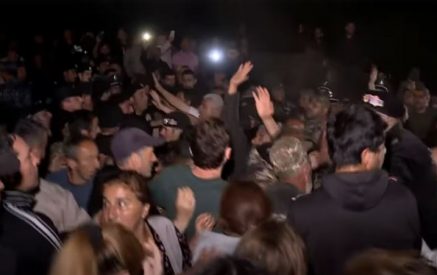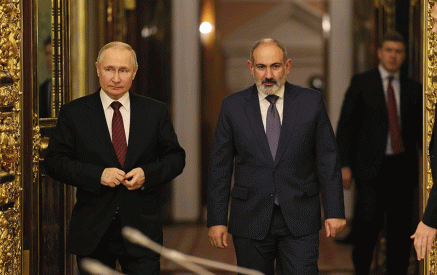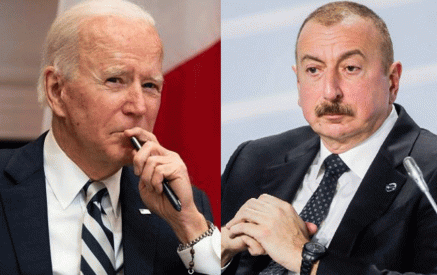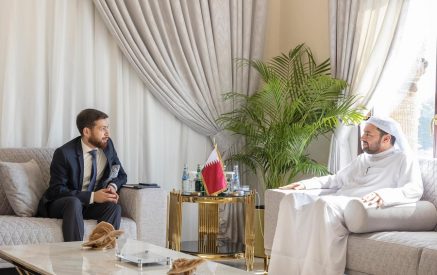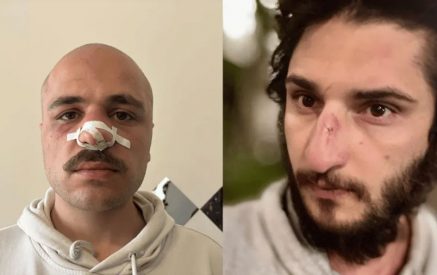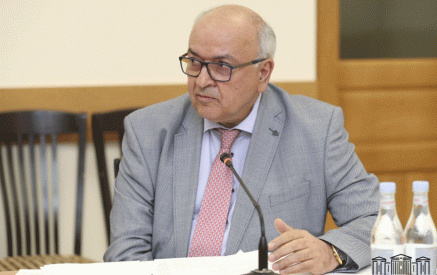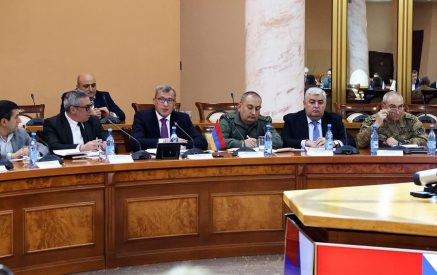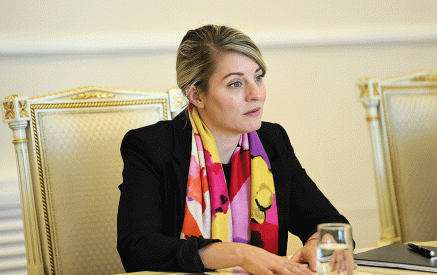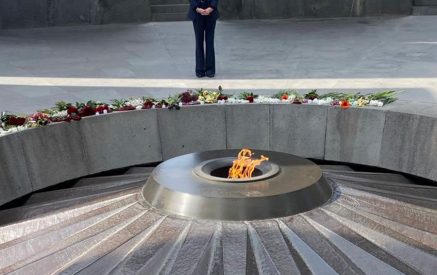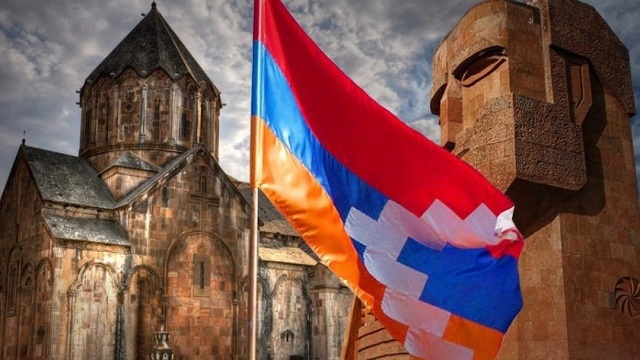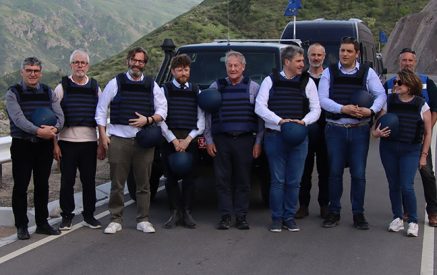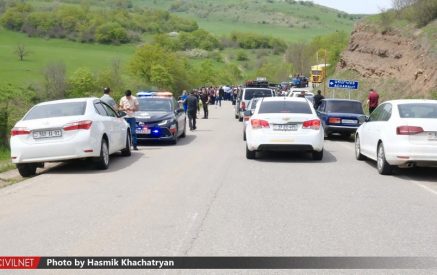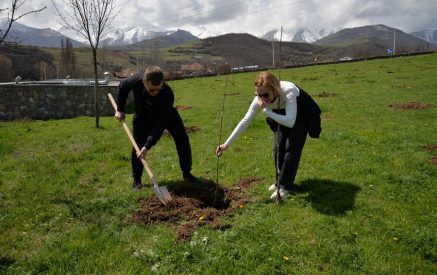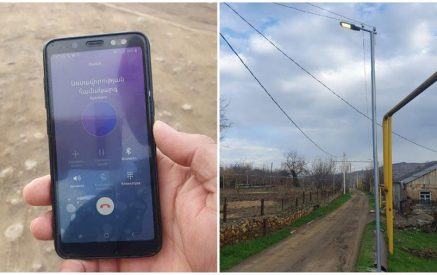To the representative of a nomadic, mixed-race, tent-dwelling tribe of unknown origin, so-called President of Institute for Human Rights and Democracy of the so-called Azerbaijan. Although you, your grandparents and ancestors, are far from literature, because your main “employment” is theft and sheep breeding, you should always remember that:
1. Artsakh was an indivisible part of the ancient Armenian state.
2. From 1813 until the revolution in Russia in 1917, Artsakh was an administrative unit within the borders of the Russian Empire.
3. In 1918-1920 the sixth convention of Armenians of Artsakh, which was legislative body and had 10 conventions, declared Artsakh an independent political entity based on the right of nations to self-determination, and according to decisions which were taken during first and ninth conventions, Artsakh had declared itself an integral part of the Republic of Armenia. As an independent political unit, Artsakh had an executive body of government, at first it had been Inter-Party Bureau, then Artsakh People’s Government, and after the Armenian National Council of Karabakh.
Read also
4. Neither de jure nor de facto Artsakh has never been part of an independent state called Azerbaijan.
5. The state named Azerbaijan was established on May 28 in 1918 by the Ottoman authorities through invading the Turkish army in Transcaucasia. The name Azerbaijan for the new created state was chosen as there was a region called Azerbaijan in the northeastern part of Iran.
6. Proclaimed on May 28 in 1918 and existed before April 28 of 1920 the Democratic Republic of Azerbaijan, was not internationally recognized. On December 1 in 1920 the League of Nations refused to recognize the Democratic Republic of Azerbaijan because: Azerbaijan had never been a state before, it had appropriated the name of a neighboring Persian state and for the impossibility of determining the exact borders of Azerbaijan because of the border disputes with the neighboring countries.
7. On November 30, 1920 by the decision of the Revolutionary Committee of the Soviet Socialist Republic of Azerbaijan, Nagorno Karabakh was declared as part of the Soviet Socialist Republic of Armenia.
8. On June 12, 1921 Nagorno-Karabakh, which was Sovietized on May 26 of 1920, by a decree adopted by Alexander Myasnikyan, the chairman of the Council of People’s Commissars of Soviet Armenia, was declared an integral part of Soviet Armenia.
9. The Caucasus Bureau of the Communist Party of Soviet Russia, which has no right to resolve territorial issues on July 5 in 1921 without discussing and putting to a vote, that is, in fact, not adopted and by an illegal decision integral part of Soviet Armenia was forcibly annexed to Soviet Azerbaijan without taking into account the will of the people of Artsakh.
10. The government of Soviet Azerbaijan, violating the illegal decision (without discussing and putting to a vote, that is, in fact, not adopted) of July 5, 1921, formed Nagorno-Karabakh Autonomous Oblast (NKAO) only in a part of the Nagorno-Kharabakh, deliberately excluding from NKAO territory Shahumyan, which geographically and historically considered the territory of Nagorno Karabakh (currently occupied, annexed to the Goranboy region of Azerbaijan), Shahumyan region of the present Artsakh Republic (Karvachar region of the former Azerbaijan SSR, currently occupied by Azerbaijan), Kashatagh region of the current Artsakh Republic (Lachin region of the former Azerbaijani SSR, currently occupied by Azerbaijan), Kashatagh region of the present-day Artsakh Republic (Lachin region of the former Azerbaijan SSR, currently occupied by Azerbaijan), Kovsakan region which is the part of Khashatagh region of the present-day Artsakh Republic (Zangelan region of the former Azerbaijan SSR, currently occupied by Azerbaijan), Akna, the part of the Askeran region of the present-day Artsakh Republic (Aghdam region of the former Azerbaijan SSR, currently occupied by Azerbaijan, Kashunik which is the part of Kashatagh region of the present-day Artsakh Republic (Kubatlu region of the former Azerbaijan SSR, currently occupied by Azerbaijan), Jrakan which is part of the Hadrut region of the present-day Artsakh Republic (Jabrayil region of the former Azerbaijan SSR, currently occupied by Azerbaijan), etc.
11. On July 7 in 1923 the government of Soviet Azerbaijan, without taking into account the opinion of the people of Artsakh, illegally occupied the most of the northern, southern and eastern parts of the territory of Artsakh.
12. According to ‘The Declaration on the Restoration of the State Independence of the Republic of Azerbaijan’, adopted on August 30, 1991 and the Constitutional Act of the Republic of Azerbaijan “On the Restoration of the State Independence of the Republic of Azerbaijan” adopted on October 18, 1991, Azerbaijan renounced the legal succession of Soviet Azerbaijan, restoring a state called democratic republic of Azerbaijan, which existed from 28 May, 1918 until April 28, 1920, and wasn’t internationally recognized. Artsakh has never been a part of this republic.
13. According to the Constitutional Act “On the Restoration of the State Independence of the Republic of Azerbaijan” adopted on October 18, 1991, Azerbaijan renounced the legal succession of Soviet Azerbaijan and declared itself the successor of the existing Democratic Republic of Azerbaijan in 1918-1920, Azerbaijan, in fact, invalidated all legal acts adopted in the Soviet period concerning Azerbaijan. In fact, by the above-mentioned constitutional act, the Republic of Azerbaijan declared invalid the illegal ‘decision’ (it wasn’t discussed and put to a vote) taken by the Central Committee of the Communist Party of Soviet Russia on July 5 in 1921 about annexing Artsakh to Soviet Azerbaijan.
14. The legal process of declaring Artsakh a republic on September 2 in 1991, as well as declaring the newly declared republic independent through a referendum held on December 10 of the same year according to the will of the Artsakh Armenians, was carried out in accordance with the requirements of international and USSR legislation.
15. The Supreme Council of Soviet Azerbaijan, instead of deciding to hold a referendum on the withdrawal of Soviet Azerbaijan from the USSR, on August 30 in 1991 adopted the declaration on the ‘Restoration of State Independence of the Republic of Azerbaijan’ and violated the ‘Procedure for resolving issues related to the withdrawal of the peoples from the USSR’ for the peoples living in the territory of Azerbaijan, that is, the right to express one’s will defined by article 2 of the Law adopted by USSR on April 3, 1990. In this sense, Azerbaijan gained de jure independence on December 26 in 1991, as a result of the dissolution of the Soviet Union, while at that time the Republic of Artsakh was an independent state for almost four months. In this sense, Azerbaijan gained de jure independence in 1991. As a result of the dissolution of the Soviet Union on December 26, 1991, while at that time the Republic of Artsakh was an independent state for almost four months.
16. In accordance with the charter of the United Nations, United Nations General Assembly and according to the regulations of the Security Council, United Nations, unlike any other non-existent League of Nations, has no authority to recognize the borders of a State or the territorial integrity of a State.
17. Examination of all the documents adopted by the UN on the accession of Azerbaijan, allows to assert that UN has not discussed any issue recognizing the borders of the Republic of Azerbaijan or its territorial integrity.
18. On January 14 in 1992 the president of Azerbaijan, submited an application to the United Nations Secretary-General for the accession to the United Nations, reporting on the restoration of independence lost in 1920. In fact, by this letter the president of Azerbaijan informed the world community that Azerbaijan has restored an internationally unrecognized state, in which Artsakh has never been in any status.
19. It is necessary to keep in mind that according to submitted application on January 14 in 1992 by the president of Azerbaijan for the accession to the United Nations and by the resolution adopted on January 14 in 1992 by the General Assembly of UN which was about accepting Azerbaijan as a member of UN, UN accepted Azerbaijan as a member of UN without Artsakh.
20. Azerbaijan’s territorial claims to the Artsakh Republic have no historical or legal basis.
STEPAN HASAN-JALALYAN,
political scientist

